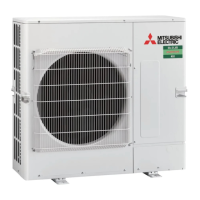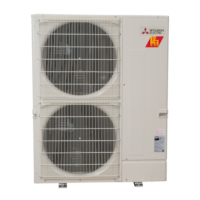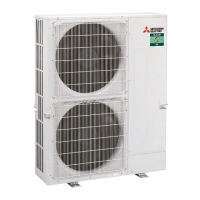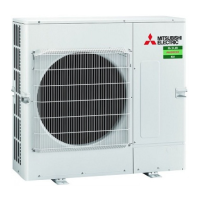SERVICE MANUAL
No.OCH707
REVISED EDITION-C
SPLIT-TYPE AIR CONDITIONERS
R32
July 2020
Outdoor unit
[Model Name]
PUZ-M100VKA
PUZ-M100VKA-ET
PUZ-M125VKA
PUZ-M125VKA-ET
PUZ-M140VKA
PUZ-M140VKA-ET
PUZ-M100YKA
PUZ-M100YKA-ET
PUZ-M125YKA
PUZ-M125YKA-ET
PUZ-M140YKA
PUZ-M140YKA-ET
[Service Ref.]
PUZ-M100VKA.TH
PUZ-M100VKA-ET.TH
PUZ-M125VKA.TH
PUZ-M125VKA-ET.TH
PUZ-M140VKA.TH
PUZ-M140VKA-ET.TH
PUZ-M100YKA.TH
PUZ-M100YKA-ET.TH
PUZ-M125YKA.TH
PUZ-M125YKA-ET.TH
PUZ-M140YKA.TH
PUZ-M140YKA-ET.TH
PARTS CATALOG (OCB707)
CONTENTS
1. REFERENCE MANUAL ····························2
2. SAFETY PRECAUTION ····························2
3. SPECIFICATIONS ································· 12
4. DATA ·················································· 13
5. OUTLINES AND DIMENSIONS ················ 16
6. WIRING DIAGRAM ································ 17
7. WIRING SPECIFICATIONS ····················· 20
8.
REFRIGERANT SYSTEM DIAGRAM
·········· 25
9. TROUBLESHOOTING ···························· 27
10. FUNCTION SETTING ····························· 83
11.
MONITORING THE OPERATION DATA BY THE REMOTE CONTROLLER
····89
12. EASY MAINTENANCE FUNCTION ··········· 99
13. DISASSEMBLY PROCEDURE ················103
Note:
•
This service manual
describes technical data
of the outdoor units only.
Revision:
• Connectable indoor units
have been added in
REVISED EDITION-C.
OCH707 REVISED EDITION-B
is void.





